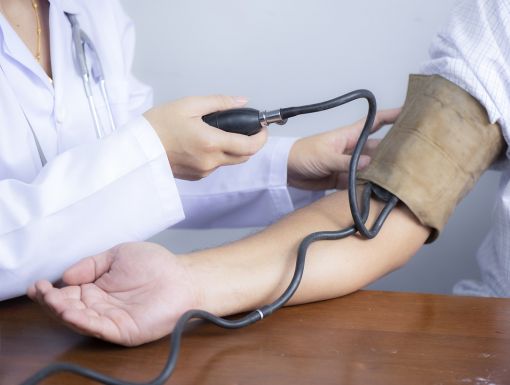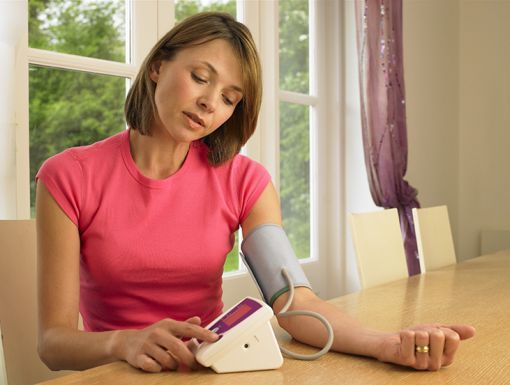
Low Blood Pressure
Low blood pressure, also known as hypotension, is when the blood pressure is so low that blood flows inadequately to the organs. Blood pressure is a measure of how hard the blood flows through the walls of your arteries as it travels throughout your body. Inadequate blood flow due to low blood pressure could result in oxygen and nutrients not reaching key organs. For some, it causes no problems at all, but it can cause dizziness and fainting in others. In severe cases, low blood pressure can be life-threatening. Severe hypotension can indicate an underlying problem, which could lead to more serious problems like heart disorders and organ failure.
Most healthy adults are not affected by low blood pressure and it is normal for people who exercise regularly. People that work out regularly tend to have lower blood pressure than those that don’t. The range of systolic blood pressure for most healthy adults falls between 90 and 120 millimeters of mercury (mm Hg) and normal diastolic blood pressure ranges between 60 and 80 mm Hg. Current guidelines define normal blood pressure range as lower than 120/80. Blood pressures over 130/80 are considered high. If you are affected by low blood pressure, it’s important to find out what’s causing your low blood pressure so that it can be treated. Low blood pressure is as important to address as high blood pressure.
While it’s important to know your numbers, low blood pressure is mainly defined by signs and symptoms and not by a specific blood pressure number. Some individuals routinely have blood pressure numbers of 90/50 with no symptoms and therefore do not have low blood pressure.
Symptoms of low blood pressure
Low blood pressure often signals underlying problems, especially when you have a sudden drop in levels, or it’s accompanied by any of the following symptoms:
- Dizziness
- Fainting
- Blurred vision
- Nausea
- Fatigue
- Lack of concentration
Conditions or diseases that can cause low blood pressure
- Heart Disease: Chest pain or even a heart attack may occur when there is insufficient blood flow to the heart.
- Shock: This is a life-threatening condition where persistently low blood pressure causes organs such as the kidney, liver, heart, lung and brain to fail rapidly. This will cause confusion (especially in older people), cold, clammy and pale skin, rapid and shallow breathing and a weak rapid pulse.
What causes hypotension?
Everyone will have a drop in their blood pressure at some point. Normally, it doesn’t cause any noticeable symptoms. Certain conditions may cause prolonged periods of hypotension that may become dangerous if left untreated. This may include:
- Pregnancy, due to an increase in demand for blood from mother and baby
- Large amounts of blood loss due to an injury
- Decreased circulation caused by heart attacks
- Weakness and shock accompanied by dehydration
- Anaphylactic shock, a severe form of an allergic reaction
- Infections of the bloodstream
- Endocrine disorders:diabetes and thyroid disease
It is possible that current medications can also cause your blood pressure to drop. Beta-blockers and nitroglycerin, used to treat heart disease, are common culprits. Diuretics, tricyclic antidepressants and erectile dysfunction drugs may also cause hypotension.
Types of hypotension
- Orthostatic hypotension: This is the drop in blood pressure that happens when you transition from sitting or lying down to standing up. This is common in people of all ages. As the body adjusts to the position change, you may feel a brief period of dizziness. Some refer to this as “seeing stars.”
- Postprandial hypotension: This drop in blood pressure occurs right after eating. It’s a type of orthostatic hypotension with similar symptoms. Older adults, especially those with Parkinson’s disease, are more likely to develop postprandial hypotension.
- Neurally mediated hypotension: This happens after you stand for a long time. Children experience this form of hypotension more often than adults. Emotionally upsetting events can also cause this drop in blood pressure.
- Severe hypotension: This is related to shock. Shock happens when your organs do not get the blood and oxygen they need to properly function. Severe hypotension can be life-threatening if not treated promptly.
Treatment for hypotension
The treatment will depend on the cause of your hypotension. There are numerous options that include medications for heart disease, diabetes or infection. Staying hydrated can help you treat and avoid the symptoms of neurally medicated hypotension. If you notice you experience hypotension when you stand for long periods of time, start implementing breaks so you can sit down. It’s also vital to reduce your stress levels to avoid emotional trauma.
When it comes to orthostatic hypotension, treat it with slow and gradual movements. Instead of standing up very quickly, try working your way into a sitting or standing position before completely standing up. Another great way to avoid this form of hypotension is by not crossing your legs when you sit.
Shock-induced hypotension is the most serious form of hypotension. Severe hypotension must be treated immediately. Emergency personnel will be able to give you fluids and products to increase your blood pressure to steady your vital signs.


